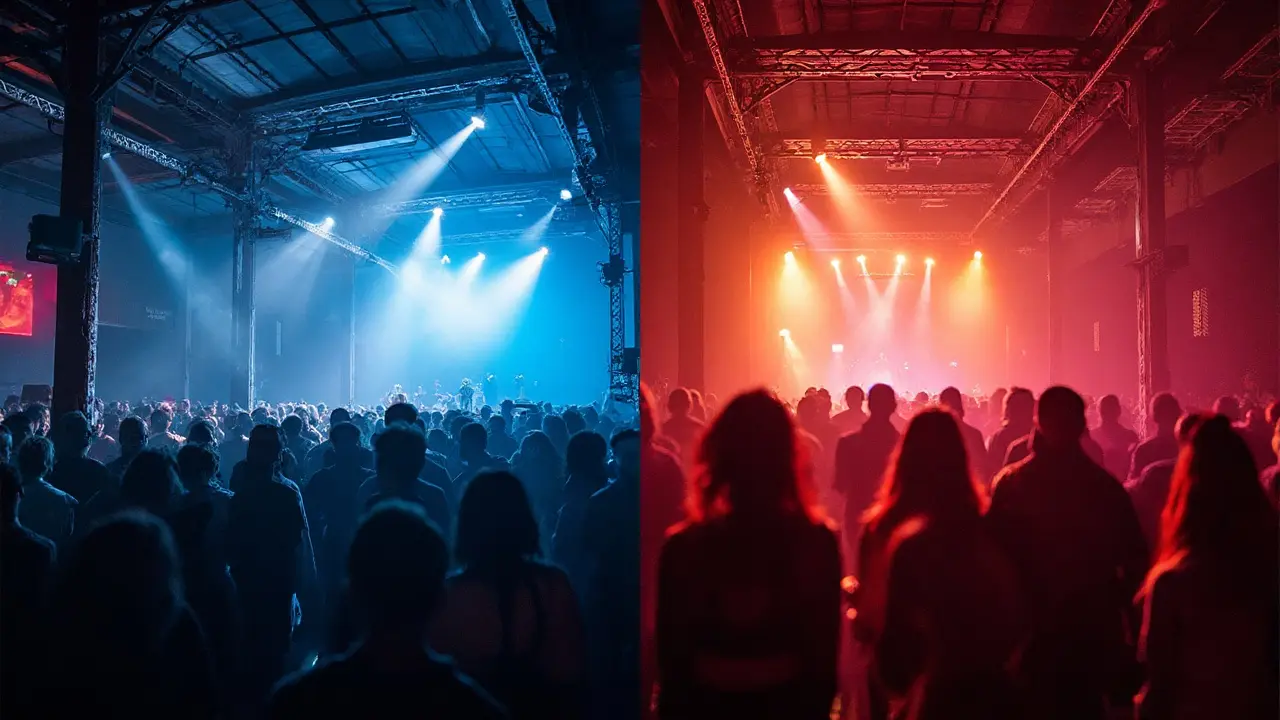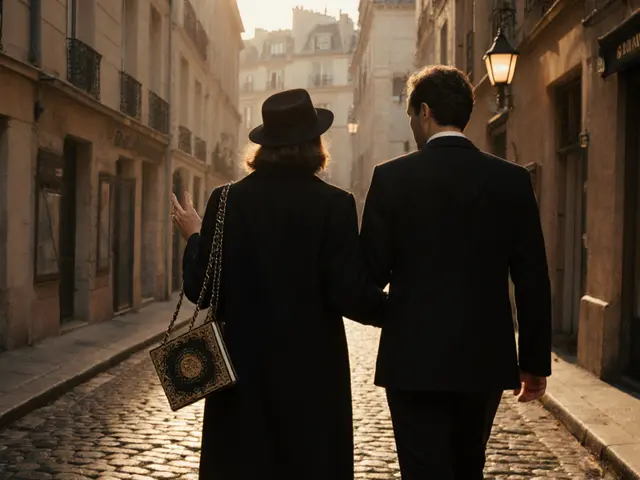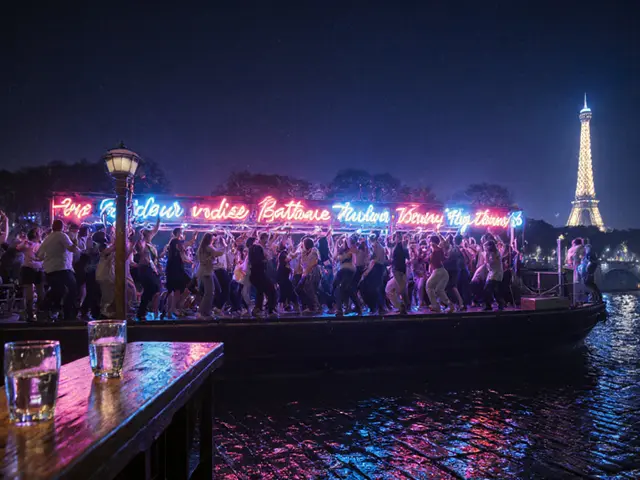You want a room that shakes in the right way, a DJ who tells a story, and a night you’ll still talk about at brunch. Not hype. Not a random playlist with strobe lights. Real selectors, real sound, and a crowd that gets it. This is how to find the best DJs in Paris tonight-without wasting a night or half your budget.
TL;DR
- Pick your vibe first (house/techno/afro/leftfield), then the venue that curates that sound well. Curators beat “big names.”
- Check lineups on Resident Advisor and Dice, pre-listen on SoundCloud/YouTube/Boiler Room, then buy presale to dodge queues and markups.
- Paris staples for elite bookings: Rex Club (techno/house heritage), Djoon (afro/house), La Machine (mixed), Badaboum (house/indie dance), Kilomètre25 in season (open‑air beats).
- Arrive before 1:00 to catch the build-up. Four-hour journeys > 90‑minute hit-and-run sets. Pack earplugs and hydrate.
- Have a Plan B nearby. If it’s packed, harsh, or the vibe’s off, switch rooms or venues. Trust your ears, not flyers.
What “best DJs” actually means in 2025 (and what it doesn’t)
When people say “best DJ,” they usually mean “most famous.” That’s not the same thing. In a club, the goal isn’t chart status; it’s flow-how the music fits the room, the system, the hour, and the crowd. I’ve had nights where a local opener kept the room floating for two hours, and the headliner came on and sprinted through bangers. The opener won. Why? Context.
Use these quick checks when you’re choosing where to go:
- Curation over celebrity: Venues with a booking identity rarely miss. They filter so you don’t have to. If a club consistently nails your taste, you can trust the flyer-even if you don’t recognize the names.
- Set length matters: Longer slots (3-5 hours) let a DJ breathe and build tension. If it’s a festival-style night with six acts and 75‑minute sets, expect rapid-fire, not storytelling. Pick what you want.
- Room + system pairing: The same track plays very differently on a treated room with proper subs. Funktion‑One and L‑Acoustics rigs are common; both can be stellar in the right hands with a good engineer.
- Time of night: Opener sets can be magic for groove. Peak-time is for release. Closers get weird and wonderful. Decide which chapter you want.
- Local heroes vs. touring names: Locals know the room and the regulars. Touring headliners bring fresh flavors. Blended bills are usually strongest.
Reality check: the tightest nights in 2025 often look small on the flyer. You’ll scroll past them if you’re chasing only headlines. Resist that.
Paris venues that punch above their weight (and how they differ)
Different rooms reward different tastes. Below is a practical snapshot to help you match the venue to your night. Prices are typical, not promises-expect dynamic pricing and surcharges on peak weekends and holidays.
| Venue | Sound & Room | Typical Genres | Crowd Energy | Cover (EUR) | Best For |
|---|---|---|---|---|---|
| Rex Club | Tuned, punchy; iconic booth | Techno, house, electro | Heads-first, focused | 15-30 | Purist sets, label takeovers, longer journeys |
| Djoon | Warm, soulful; dancing-forward floor | Afro-house, soulful house, deep | Smiling, expressive | 15-25 | Uplift, vocals, drum-heavy grooves |
| La Machine du Moulin Rouge | Multiple rooms; big energy | House, techno, bass, mixed | High-octane, varied | 15-35 | Mixed crews, big nights, multi-room wandering |
| Badaboum | Intimate, solid low end | House, indie dance, disco | Friendly, fashionable | 15-25 | Melody, groove, date-night dancing |
| Kilomètre25 (in season) | Open‑air, festival vibe | Techno, breaks, leftfield | Loose, outdoorsy | 10-30 | Summer parties, daytime/evening sets |
“Best for / not for” cheat notes:
- Rex Club: Best for heads who care about the craft; not for bottle service or chart-chasing vibes.
- Djoon: Best for feel-good house and drums; not for industrial techno.
- La Machine: Best for mixed friend groups; not for purists wanting one genre all night.
- Badaboum: Best for groove + social; not for 140‑BPM tunnel techno fans.
- Kilomètre25: Best for warm-weather movement; not for winter or sound-nerds chasing pitch-black rooms.
I’ve lost afternoons at Djoon because a conga roll grabbed my spine, and I’ve closed out at Rex more times than I can count. When my partner Anna wants vocals and sunshine in mid‑May, we lean outdoors. A visiting techno friend? We aim for a label night under a ceiling that traps the bass in all the right ways.
Sources to check lineups and credibility: Resident Advisor event listings for programming and running orders; Dice for tickets and set-time updates; Instagram stories of the venue and the promoters for last-minute changes; Beatport genre charts to get a sense of what a billed label is pushing lately.

How to read tonight’s lineup like a pro (and avoid disappointment)
This is the part that saves you money and a long queue. Reading a flyer is a skill. Here’s the quick path from poster to actual plan:
- Identify the programming spine: Is it a label night, a local crew, or a touring headliner with two locals? Label nights usually deliver a tighter sound. Mixed bills can be more varied but less cohesive.
- Pre-listen to two recent sets: Search the artist + “Boiler Room,” “Hoer,” “Rinse,” or a radio mix. Skip through-do the transitions feel intentional? Are there valleys and peaks? If you’re not nodding after 90 seconds, keep scrolling.
- Match BPM and mood to your group: If your crew splits between disco and tunnel techno, you’re setting up a tug of war. Pick one vibe or choose a multi-room venue so nobody sulks by the bar.
- Check set length and running order: If the headliner plays 1:30-3:00, plan your arrival so you catch the build-up and don’t miss the sweet spot. Ask at the door or check the venue’s story for updates.
- Audit the room size: A buzzy DJ plus a small basement equals heat and long queues for water. If you want space to move, pick the bigger room night or show up early.
- Look for “open to close” notes: These are often gold-one artist shaping the whole night. If you like their sonic world, this is the safest bet.
Quick heuristic: save three tracks from tonight’s DJs to a playlist. If you can’t find three you’d actually play on your commute, pass and pick a different bill.
Red flags that the night won’t match your taste:
- The promoter’s page is light on music clips and heavy on bottle shots.
- All caps DJ names and zero mention of set times or support-often a churn night.
- “Very special guest” with no context on a busy weekend; could be great, but it’s a gamble.
Green flags worth paying for:
- Labels you already like hosting the night.
- Venues posting the soundcheck and booth view-confidence in the system.
- Artists sharing their plan or mood for the night. When DJs hint at “slow build then pressure,” they care about pacing.
Where to confirm details without guesswork: Resident Advisor for doors and set-times, Dice for ticket tiers and sold‑out warnings, artist and venue Instagram stories for last‑minute changes. For transit, check the RATP app for last metro and night buses; late metros on weekends help, but don’t assume-verify the schedule before you leave.
Tickets, timing, budget, safety: the practical playbook
Good music is half the night. The other half is execution-how you get in, hear well, and leave smiling.
Buying tickets
- Presale > door: Cheaper, faster, and you’ll clear capacity caps. Secure early tiers on Dice/RA. Avoid third‑party resellers unless the platform supports safe resale.
- Time your buy: If a headliner is hot or it’s a holiday weekend, grab early. For niche bills, you can wait until the week of-but track tiers so you don’t pay 2× at the door.
- Bring ID and the card you used: Many doors ask for both to prevent fraud. Keep your email confirmation handy.
When to arrive
- Before 1:00: You’ll hear the warm‑up, find your spot on the floor, and avoid peak queues.
- After 3:00: Good if you’re chasing the headliner’s core or a deeper late vibe. Risk: crowded, tired staff, late‑night surcharges.
Hearing and comfort
- Earplugs: Not uncool. Your future self will thank you. High‑fidelity plugs keep clarity and cut harshness.
- Hydration: Grab water every few tracks. Paris crowds move a lot, and some rooms run warm.
- Positioning: Sweet spot is usually 2/3 back, centered between stacks. If the highs are sharp, slide off-axis. If the bass is muddy, step forward and center.
Budgeting
- Cover: 15-35€ is common; holiday lineups run higher.
- Bar: Expect 7-12€ for beer, 10-15€ for simple mixed drinks. Cashless is common-charge your phone.
- Transport: Set aside for a rideshare home. Last metro is usually around 1:15-2:15 depending on day-confirm on RATP.
Etiquette and safety
- Ask before filming others. Many clubs are cracking down to keep the floor present and safe.
- Keep drinks clear of the booth and monitors. Spills kill gear and moods.
- Respect personal space; it’s a dance floor, not a scrum. If you bump someone, a quick “sorry” goes a long way.
- If something feels off, flag security. Paris staff are generally responsive and want a good night for everyone.
Checklist you can screenshot
- Pick vibe (house/techno/afro/leftfield)
- Check RA/Dice + pre‑listen to 2 sets
- Buy presale + ID + charged phone
- Earplugs + small packable bottle cap (if allowed)
- Arrive before 1:00, find the sweet spot
- Plan B venue in walking range
Mini‑FAQ
What if the night sells out? Watch the official resale on Dice or the venue’s story-new tiers sometimes open after midnight. Don’t trust DMs or paper tickets in line.
Are open‑air parties still a thing in 2025? Yes in season. Expect reduced hours in cold months and weather‑dependent changes. Always check the event page on the day.
Can I count on set times? Use them as a guide. Delays happen. If you’re chasing a specific DJ, get there 30-45 minutes before their posted slot.
How do I find quieter corners? Opposite the booth, a few meters off center, or by the bar wall. If it’s still harsh, rotate your spot-small shifts can fix treble fatigue.
What if my group splits on genre? Pick a multi‑room venue like La Machine or choose back‑to‑back nights: house Friday, techno Saturday. Or agree on a two‑hour window at one, then switch to Plan B.
Next steps and quick troubleshooting
- If the line is insane: Check if presale holders have a separate queue. If not, pivot to your Plan B venue rather than burning 90 minutes curbside.
- If the DJ cancels: Promoters usually announce replacements on Instagram by late afternoon. Decide fast-replacement could be a gem or a mismatch for your taste.
- If the floor is too packed: Move back 3-5 meters; density falls off fast. If it’s still sardines, consider changing rooms or venues.
- If the sound is off: Try center‑back. If highs pierce, tilt your head off‑axis or step behind a human “filter.” Ears first, not eyes.
- If you want something different without losing quality: Look for record store parties, gallery pop‑ups, or smaller basements curated by local collectives-often cheaper, sometimes better. Check Resident Advisor “small capacity” tags the day of.
At the end of the night, the “best DJ” is the one who made you forget the clock. Paris still excels at that in 2025. Pick the right room, trust your pre‑listens, and give yourself time to arrive, settle, and actually hear the journey. That’s how great nights happen.







Listen, if you’re going to the club you gotta respect the space. No wild selfies on the dance floor, no pushed drinks. Keep earplugs in, stay hydrated, and dont be that guy who hogs the booth. The vibe stays clean when everyone follows simple rules.
There’s a whole hidden network of data collectors embedded in the LED panels that most people never even think about. Every flicker could be a tiny beacon sending your movement patterns to an unknown server, and the very same sound‑system that makes the bass feel like a heartbeat might also be a microphone for the “crowd sentiment” algorithm. The clubs you love are actually testing grounds for the next wave of surveillance capitalism, where your preference for house over techno becomes a datapoint sold to advertisers. Even the QR codes you scan for tickets can embed tracking pixels that follow you across the city. Some say the venue owners are in cahoots with the municipal Wi‑Fi providers, turning nightlife into a giant lab for behavior‑altering experiments. It’s not just about the music; it’s about who gets to know when you’re most vulnerable on the dance floor. You might think the line is there because the DJ is popular, but it could also be a deliberate crowd‑control tactic to keep you in a confined space longer for data harvesting. The next time you see a glossy flyer, ask yourself what invisible contracts you’re signing simply by showing up. That subtle exchange of consent is the real “ticket” you’re buying. Stay alert, because the beats you love might be the soundtrack to an unseen agenda.
Hey everyone, this guide is a gold mine, and I love how it breaks down each venue, so you can match the night to your mood, and it even reminds us to hydrate, which is crucial, especially when the bass hits hard, and the tip about earplugs is a lifesaver, the sound systems at Rex and Djoon are legendary, and the advice to arrive early guarantees you catch the warm‑up, which often sets the whole vibe, plus the plan‑B suggestion is perfect for those unpredictable nights, keep sharing these gems, and let’s keep the dance floor happy!
Oh great, another checklist about “don’t forget earplugs” like we’re all clueless toddlers. As if the DJ’s set could possibly be ruined by a single pair of foam plugs. Maybe next you’ll tell us to breathe slowly while we’re dancing.
The distinction between label nights and mixed bills is especially helpful; it explains why some evenings feel more cohesive while others jump around. Noting the typical cover ranges also lets me budget without surprises. I appreciate the reminder to check the venue’s Instagram for last‑minute updates, as that’s often where changes are posted first.
Paris clubs have a legacy that goes beyond the music – the architecture, the history of each space, and the way the city’s nightlife intertwines with its art scene create a unique cultural experience. For example, La Machine’s multiple rooms echo the city’s love for variety, while Rex’s sound system is a homage to the techno pioneers of the 90s. When you step inside, you’re not just hearing a set; you’re participating in a living tradition that has shaped electronic music worldwide.
I commend the thoroughness of this guide; it provides actionable insights without superfluous embellishment. The emphasis on pre‑listening to sets is particularly prudent, as it empowers patrons to make informed choices rather than rely solely on promotional material.